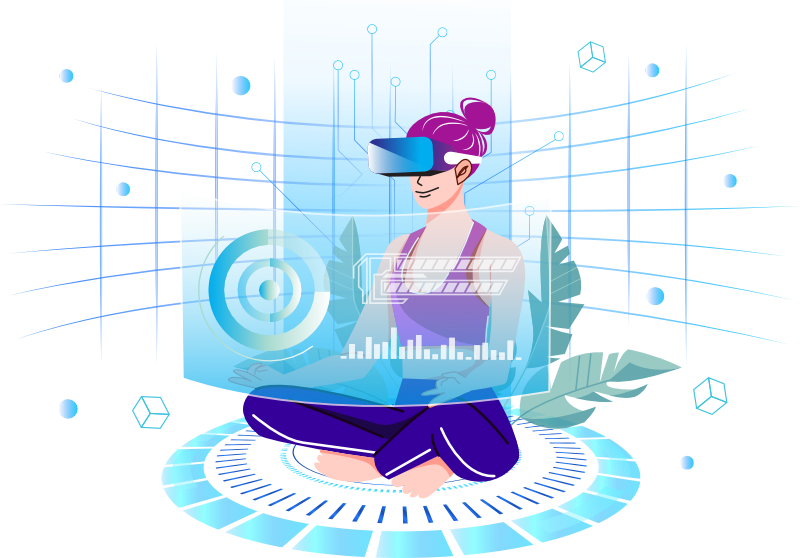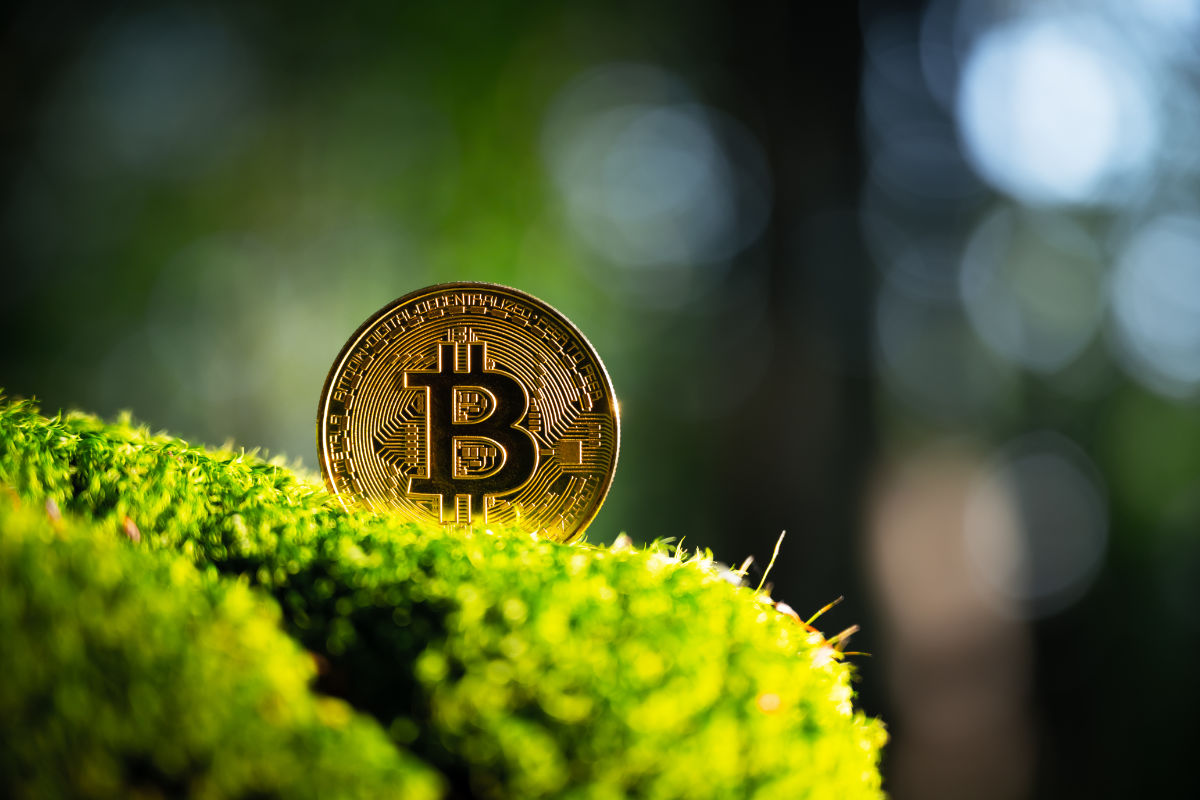
Metaverse
The Metaverse1 is a seamless convergence of our physical and digital lives, creating a unified, virtual community where we can work, play, relax, transact and socialize. The metaverse is still early in its evolution, and there is no singular, all-encompassing definition to which people can turn.
Themes of what the metaverse is and could be, however, are emerging.
A key point is that there is no one virtual world but many worlds, which are taking shape to enable people to deepen and extend social interactions digitally. This is done by adding an immersive, three-dimensional layer to the web, creating more authentic and natural experiences. The metaverse even has the promise of facilitating accessibility from the comfort of the home, breaking down boundaries and democratizing access to key goods, services and experiences.
Before diving deeper into the metaverse, it’s important to lay the foundation between features of today’s metaverse — Web 2.0 characteristics, and the emerging Web 3.0 characteristics. The lines are blurring as more and more traditional virtual worlds are adopting elements of the blockchain-based worlds.
Why the metaverse and why now?
The concept of a metaverse is not a new one. In many ways this is a linear progression. Online, multi-player, role-playing worlds like The Sims2 or Second Life3 have been around for nearly twenty years, with players spending an average of twenty hours per week in these worlds. Modern equivalents like Minecraft4, World of Warcraft5 and Fortnite6 have hundreds of millions of users, and huge supporting economies.
We are now at an inflection point, where it seems that not a day goes by without a company or celebrity announcing that they are building a presence in a virtual universe. While the buzz can partially be attributed to attention- grabbing headlines, there is a convergence of emerging trends.
A number of new technologies have come together to enable this vision of the metaverse. Augmented Reality (AR)7 and virtual reality (VR)8 headsets have become cheaper and more powerful, improving the user experience. Blockchain has enabled digital currencies and NFTs. The new methods to transact and own digital goods are allowing creators to monetize their activities through tokens. In addition to monetization, and as a means to exchange value, token-holders can also participate in the platform’s governance (e.g. vote on decisions). This democratic ownership economy coupled with the possibility of interoperability, could unlock immense economic opportunities, whereby digital goods and services are no longer captive to a singular gaming platform or brand.
From a social perspective, the development of more immersive virtual experiences is helping people to build communities based on shared values, and to express themselves in more authentic ways. Meanwhile, COVID-19 accelerated the digitization of our lives and normalized more persistent and multi-purpose online engagement and communication. It is this combination of technological, social and economic drivers that is resulting in the explosive interest in the metaverse.

Project “MetaEarth”
Making sustainability goals easier to achieve for individuals and organizations by providing easy to use carbon sequestering.
For individuals
Offset emissions as a result of daily activities, such as online shopping or crypto transactions, by contributing to carbon sequestering efforts globally.
For organizations
Make informed decisions on where you are with you sustainability goals and have more and better options on where to deploy capital and gain granular insight on how they are performing Contributions will go to traceable and auditable efforts to fund forestation, sustainable agriculture, and other sequestering endeavors. Granular control over type of activity, region, location, and even duration of commitment.
Fund afforestation efforts
Maintain trees in endangered forests by funding monitoring operations or purchasing from other entities. Transfer sequestered carbon to other entities from the lands you help forest Help farmers grow food while making sustainable decisions in their farming operations.
Partners
- Farmers
- Forestation charities/companies
- Carbon sequestering companies
- Environmental organizations
Email us. There are humans ready to reply and answer your questions.
-
A metaverse is a network of 3D virtual worlds focused on social connection. In futurism and science fiction, it is often described as a hypothetical iteration of the Internet as a single, universal virtual world that is facilitated by the use of virtual and augmented reality. ↩
-
The Sims is a series of life simulation video games developed by Maxis and published by Electronic Arts. The franchise has sold nearly 200 million copies worldwide, and it is one of the best-selling video game series of all time. ↩
-
Second Life is an online multimedia platform that allows people to create an avatar for themselves and have a second life in an online virtual world. In many ways, Second Life is similar to massively multiplayer online role-playing games. ↩
-
Minecraft is a sandbox video game developed by Mojang Studios. The game was created by Markus “Notch” Persson in the Java programming language. Following several early private testing versions, it was first made public in May 2009 before fully releasing in November 2011. ↩
-
World of Warcraft is a massively multiplayer online role-playing game (MMORPG) released in 2004 by Blizzard Entertainment. Set in the Warcraft fantasy universe, World of Warcraft takes place within the world of Azeroth, approximately four years after the events of the previous game in the series, Warcraft III: The Frozen Throne. The game was announced in 2001, and was released for the 10th anniversary of the Warcraft franchise on November 23, 2004. Since launch, World of Warcraft has had eight major expansion packs: The Burning Crusade (2007), Wrath of the Lich King (2008), Cataclysm (2010), Mists of Pandaria (2012), Warlords of Draenor (2014), Legion (2016), Battle for Azeroth (2018), and Shadowlands (2020). ↩
-
Fortnite is an online video game developed by Epic Games and released in 2017. It is available in three distinct game mode versions that otherwise share the same general gameplay and game engine: Fortnite Battle Royale, a free-to-play battle royale game in which up to 100 players fight to be the last person standing; Fortnite: Save the World, a cooperative hybrid tower defense-shooter and survival game in which up to four players fight off zombie-like creatures and defend objects with traps and fortifications they can build; and Fortnite Creative, in which players are given complete freedom to create worlds and battle arenas. ↩
-
Augmented Reality (AR) is an interactive experience of a real-world environment where the objects that reside in the real world are enhanced by computer-generated perceptual information, sometimes across multiple sensory modalities, including visual, auditory, haptic, somatosensory and olfactory. ↩
-
Virtual Reality (VR) is a simulated experience that can be similar to or completely different from the real world. Applications of virtual reality include entertainment (particularly video games), education (such as medical or military training) and business (such as virtual meetings). Other distinct types of VR-style technology include augmented reality and mixed reality, sometimes referred to as extended reality or XR. ↩